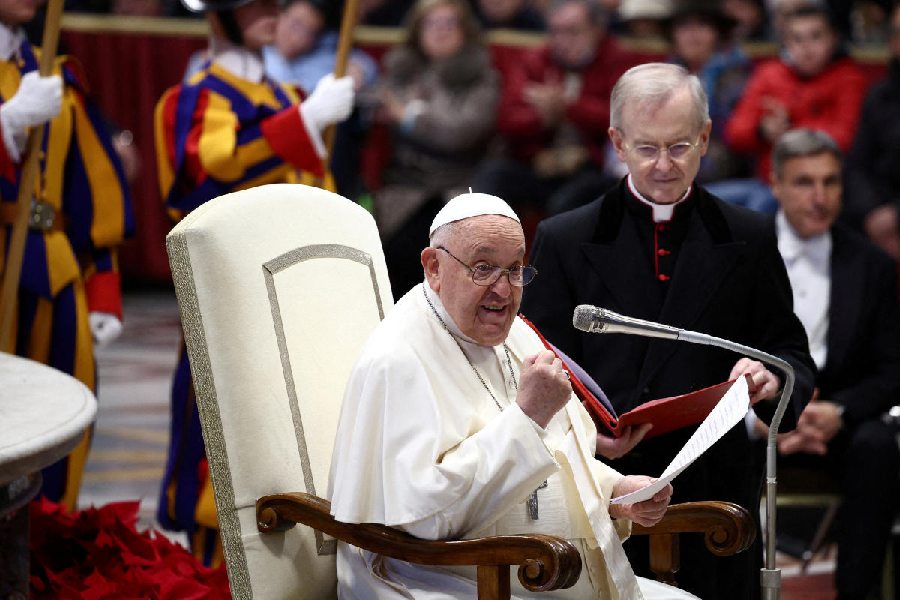Dhash. Stop. Dhash. Stop… Dhashhhh… You have heard this before. Imagine a sewing machine at work, someone’s hand moving over the wheel, another hand pinning down the cloth, feet working the paddle, up and down, up and down. The sound comes in short bursts as the wheel rolls and the stitching continues. Then a pair of large iron scissors cuts through a piece of cloth, in one steady go — dhashhhh.
This sound, emanating from a tailoring shop in Bethnal Green in East London, is one of the many sounds collected as part of what is known as the Migration Sounds project.
Migration Sounds, which was launched on September 16, features 120 sounds and stories of migration across 51 countries and is a joint effort of the University of Oxford and Cities and Memory. The latter describes itself as “one of the world’s largest sound projects”.
Migration Sounds is helmed by sound artist Stuart Fowkes. “Every sound is a possibility— it has a potential for music,” Fowkes tells The Telegraph over a Zoom call from his apartment in Oxford, UK. When Fowkes was 21, he started making electronic music by collecting various audio patterns from his surroundings. When he quit making music, he was left with a decent collection of field recordings.
In 2015, he presented these sounds to the world as Cities and Memory. He continues, “Sound has a grounding effect on listeners, allowing them to navigate the world while relating it to their lived experiences.”
Some of the sounds previously captured under Cities and Memory are sounds of protests and politics — agitated murmurs and angry chants; sacred spaces and prayers — devotional songs and melancholic tunes; food-related sounds — sizzles and stirs with dinner-table conversations; life during Covid-19 — train announcements urging passengers to wear masks as the engine chugs in the background.
Migration Sounds, which was originally a suggestion by the University of Oxford’s Centre on Migration, Policy and Society, emerged from this collection of recordings and thereafter took on a life of its own.
Migration is a polarising topic in these times. Debates on migration begin and end with numbers, figures and facts. Says Fowkes, “I think sound presents a more human face to the experience of migration.”
Back to Bethnal Green. Here the hands and feet behind the sewing machine belong to Mohammed Shajahan. Fowkes says, “One day, in London, I went down the stairs to this tailoring shop and asked the shop manager, Shajahan, if we could record some sounds.”
Shajahan welcomed him and narrated his journey from Sylhet, which is in Bangladesh, to London. Fowkes recalls, “Dressmode Tailoring is a traditional tailoring shop that mostly caters to the neighbouring South Asian communities. These shops are rapidly closing due to fast fashion but Shajahan has managed to keep it open for the last 17 years.”
On the same day, Fowkes strolled into a gurdwara in Southall, a part of London, which is often referred to as Little India for its Indian and Pakistani population. “I asked for permission to record some of the prayers,” he says. Later, he joined the worshippers in their community kitchen for a quick meal. The clattering of utensils, washing and drying of hands, and the faint sound of a prayer playing in the background. “It was an incredibly welcoming space,” says Fowkes.
People from different parts of the world send him audio clips with stories behind them. “When I check my email every morning, I find recordings from New Delhi, Chile, Santiago, New York… you name it.”
Celebratory chants of West African asylum seekers aboard Ocean Viking, a rescue ship, in the middle of the Mediterranean Sea; the mechanical voices and sounds from
the visa application process; the clanging and whistling sounds of home kitchens.
But why should anyone care for these sounds? Fowkes replies: “While a person with a history of migration may find comfort, a sense of community in these sounds, a person with no experience of migration may, perhaps, simply get a better understanding of it.”
Fowkes himself is an alumnus of Oxford and has a day job in a human rights’ organisation. He speaks cautiously but clearly. If you play him a track, he will walk you through its story — adding anecdotes and information beyond what the soundtrack conveys.
He talks about a chant from an anti-Trump rally in Portland, US, that goes — “Say it loud, say it clear, immigrants are welcome here”. Fowkes says, “Protests are often reported factually but when you are on the ground, the emotions are palpable.” He continues, “The idiom of protests differs. In Latin America, people bang pots and cans with a stick and chant during protests.”
He plays another audio from a detention centre in Moria, on the Island of Lesbos in Greece, from 2016. It is from the time rioters broke out of the camp after a child was beaten up. In the clip, you hear broken languages, impatient voices and lingering chants. It is unfamiliar at first but soon it becomes the same, old clamour of protests you have heard before and after.











